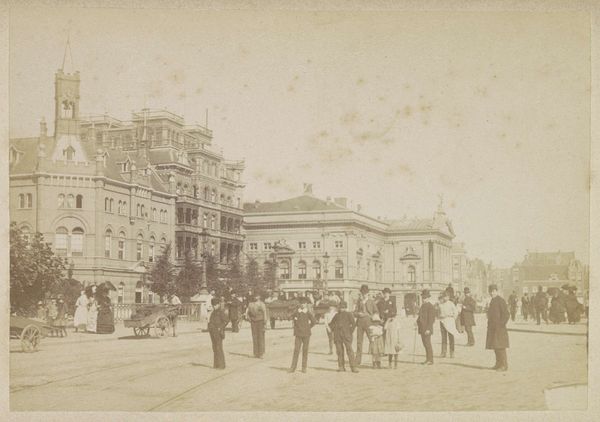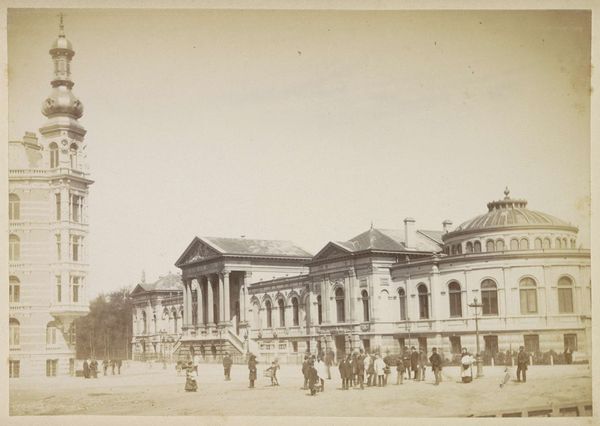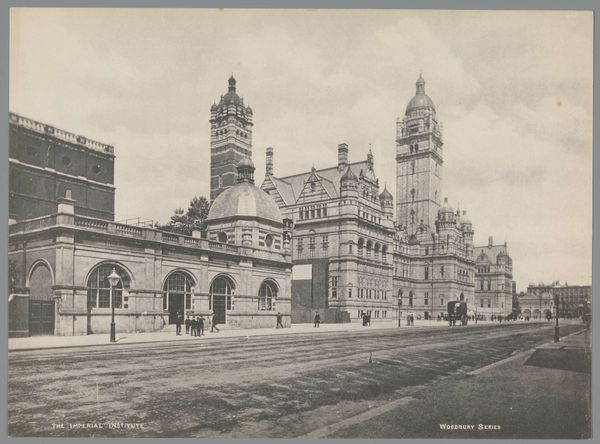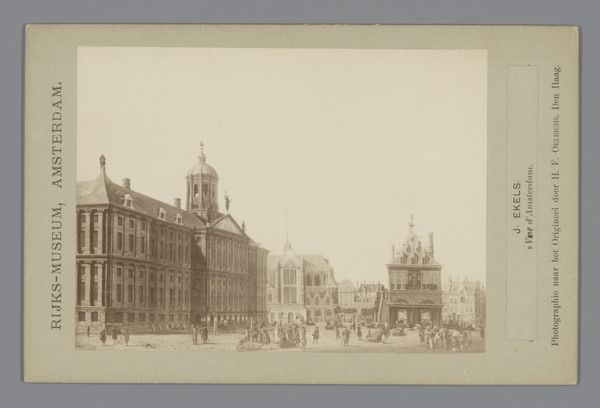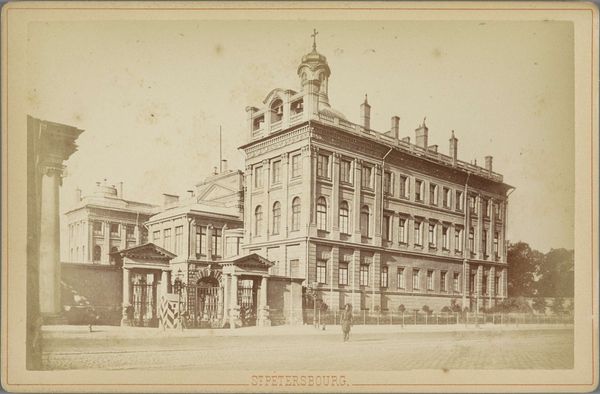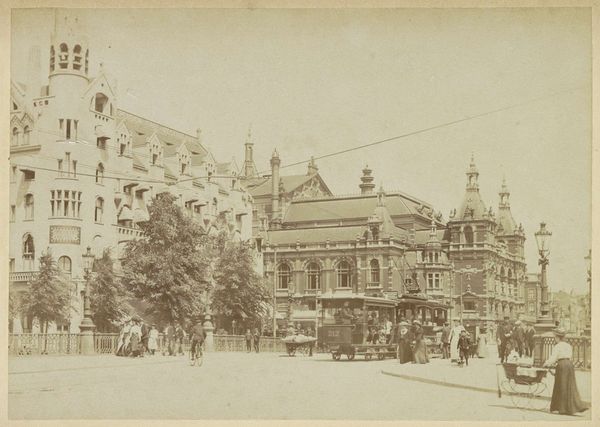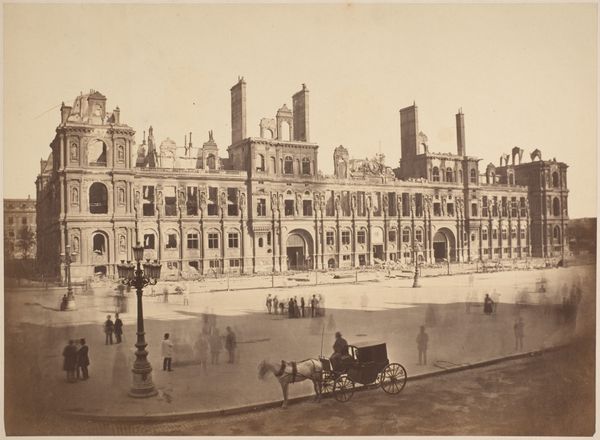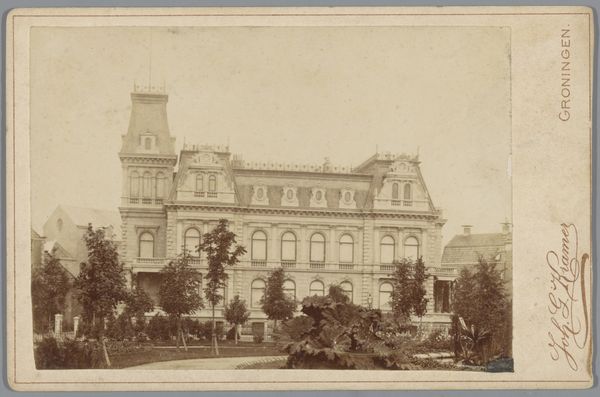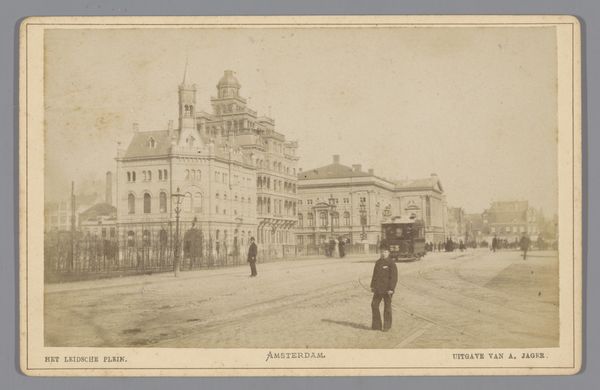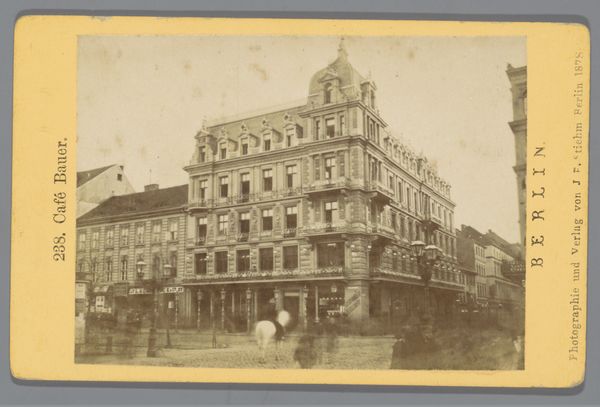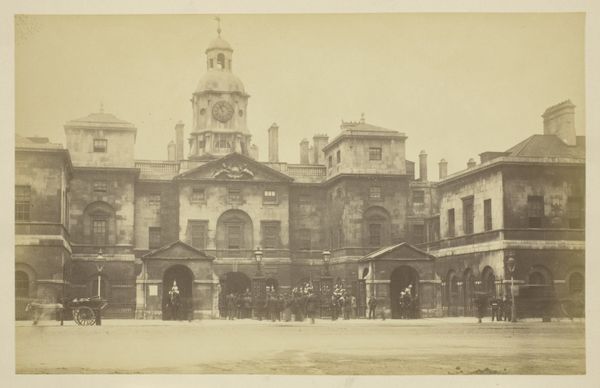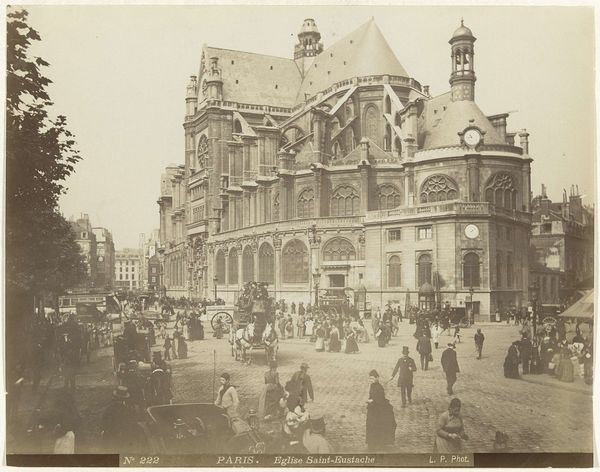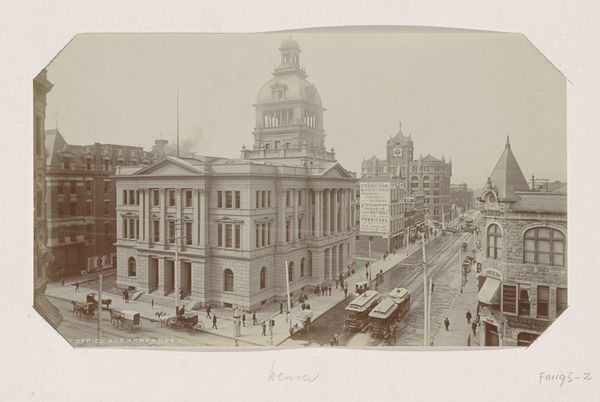
Gezicht op het Leidseplein met links het American Hotel (Américain) en rechts de stadsschouwburg after 1881
0:00
0:00
andriesjager
Rijksmuseum
photography
#
pictorialism
#
photography
#
cityscape
#
realism
Dimensions: height 95 mm, width 135 mm
Copyright: Rijks Museum: Open Domain
Curator: This is a photograph titled "Gezicht op het Leidseplein met links het American Hotel (Américain) en rechts de stadsschouwburg," placing us in Amsterdam's Leidseplein sometime after 1881, likely captured by Andries Jager. The print offers a snapshot of daily life in a bustling city square. Editor: It feels so serene, almost frozen. The sepia tones give it a nostalgic quality, like peering into a bygone era. The sharp lines of the buildings juxtapose beautifully with the soft blur of the figures passing by. Curator: Jager's use of photography here aligns with pictorialism; he's not just documenting the square. Think about how the choice of this angle—its scale, the way the light touches the architecture. It tells a particular story about Amsterdam's ambitions and burgeoning tourist industry during this time. Editor: Absolutely, and I'm curious about those blurred figures. Are they intentionally anonymous, representing the faceless masses caught up in the currents of modernity? Or is it simply a limitation of the technology, inadvertently stripping them of individual identity? It speaks volumes, doesn't it, about visibility and representation, even if unintentional? Curator: That’s astute. Early photography was rarely a neutral medium, but rather a tool wielded with distinct socio-political biases. Consider the city's theatre; it stands prominently, suggesting Amsterdam’s cultivated image. Yet, how does this narrative square with those marginalized individuals—those obscured, ghostlike figures—we see on the edges? What class or social structures do you suppose shape who could participate in these cultural institutions? Editor: So true, you start to wonder what kind of space was this? Who would feel like it was really for them? Considering also how, within the development of Amsterdam at that time, social codes operated within a specifically colonial context. The hotel itself, “American,” hints at this web of identity and international relation. Curator: Precisely, that is the power of art and historical artefacts like Jager's photograph, they are portals to a wider view of social issues, artistic expression, technological advancements and much more. Editor: This perspective really reshapes the work—it reminds us of the power structures often inherent to spaces celebrated in art.
Comments
No comments
Be the first to comment and join the conversation on the ultimate creative platform.
